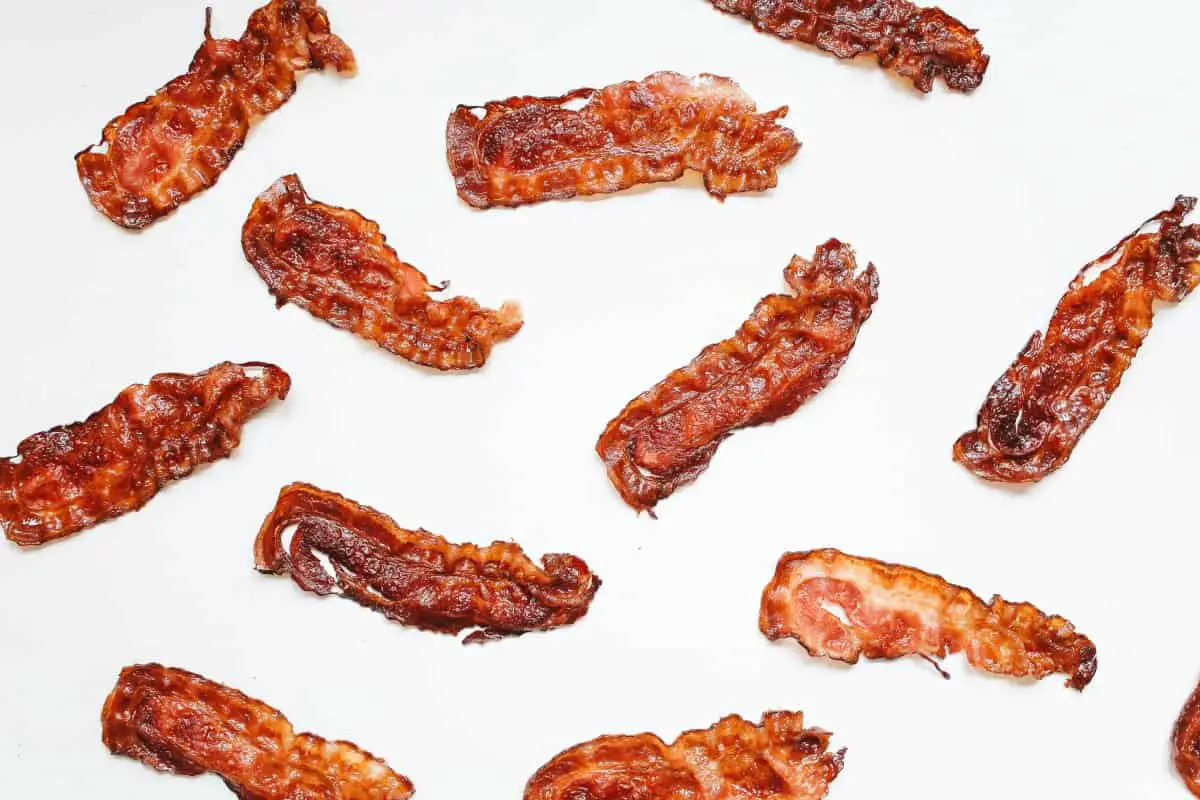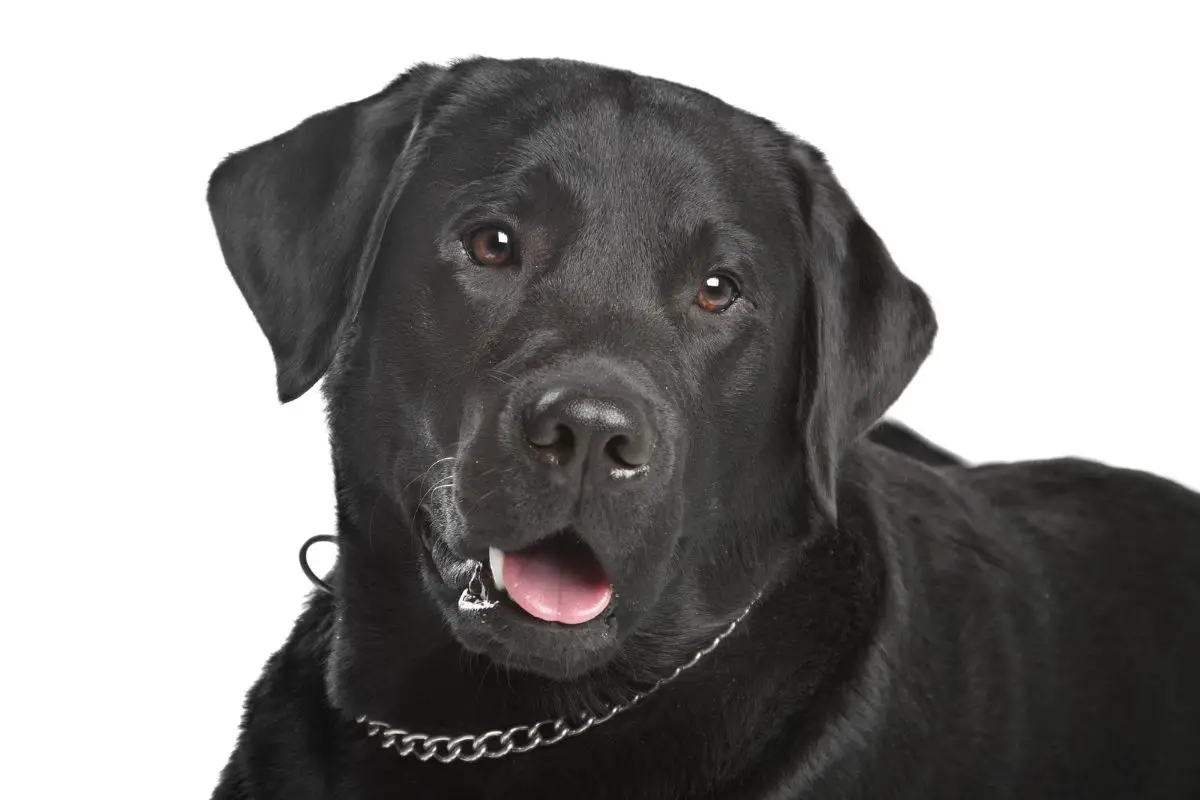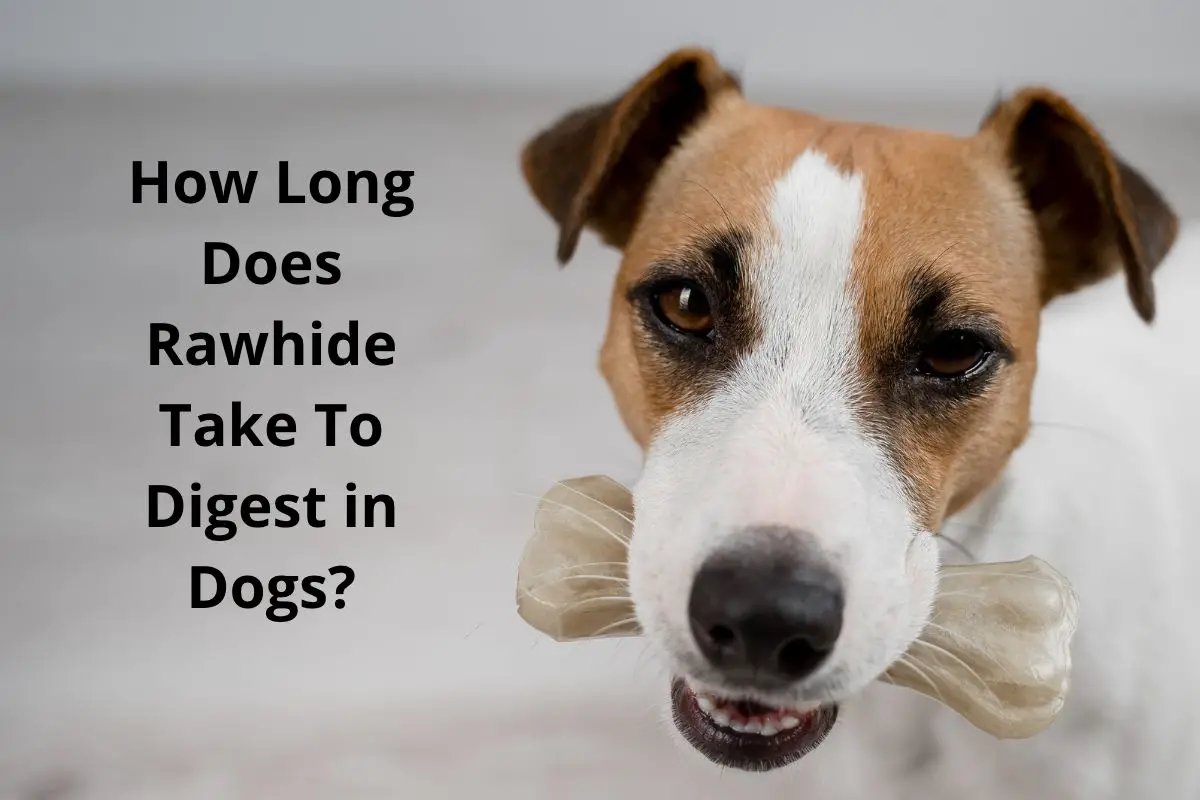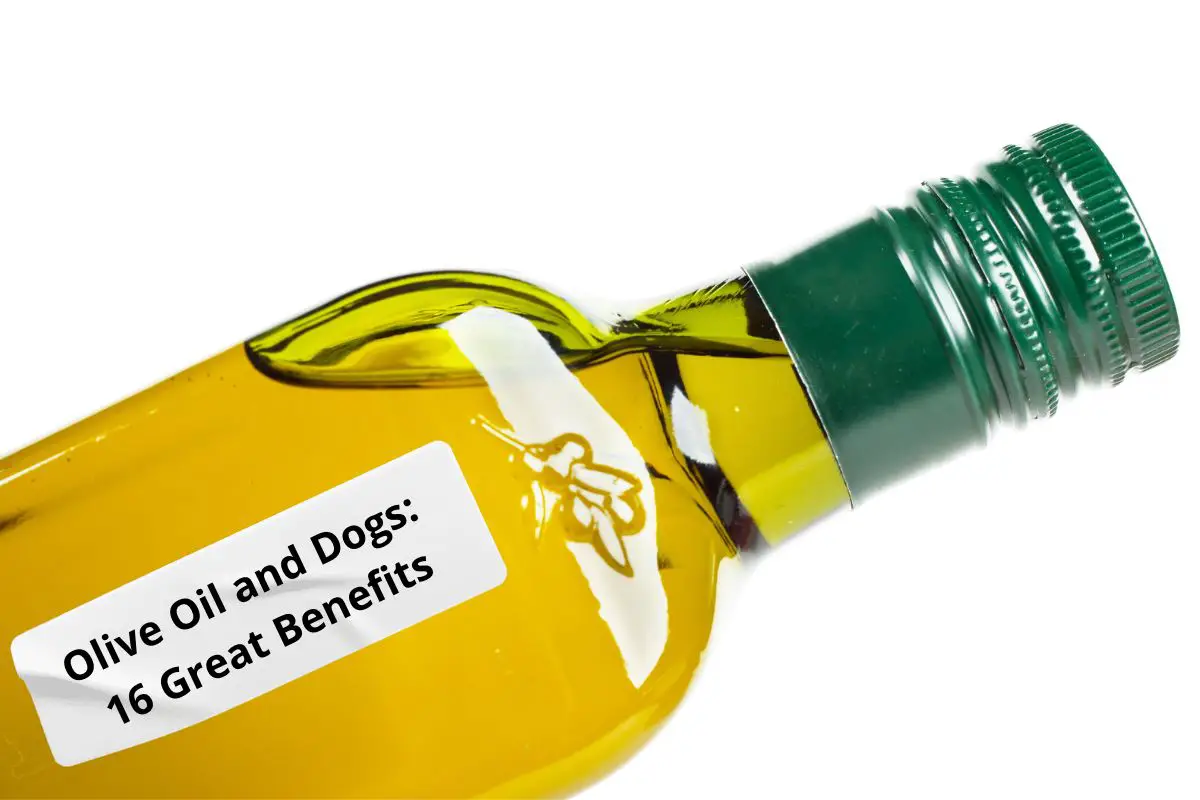This post contains affiliate links.
We all know it, that longing look in Fido’s eyes while he watches us eat our delicious human meals. It’s hard to not want to give him a few scraps, or even just the drippings from the bacon pan. But is bacon grease okay to give to your dog?
Giving bacon grease to your dog is okay every once in a while as a treat, especially if your dog is very active, but it should not be a staple part of his diet. Diets high in unhealthy fats cause a variety of health issues for dogs, like pancreatitis, weight gain, and indigestion.
In the following article we will discuss the basics of a dog’s nutritional needs, why you may or may not want to give your dog bacon grease, and how much is too much.
Table of Contents
Dogs in the Wild
To understand the dietary needs of a dog, we should examine briefly what a dog would eat, if he were still a wild animal. This will help us understand what they’re naturally prepared to digest.
Dogs were domesticated from gray wolves sometime between 20,000 and 40,000 years ago. According to the National Wildlife Federation, “wolves are carnivores—they prefer to eat large hoofed mammals such as deer, elk, bison, and moose. They also hunt smaller mammals such as beavers, rodents, and hares. Adults can eat 20 pounds of meat in a single meal.”
Obviously, your Teacup Yorkie won’t be bringing down a bison anytime soon. It’s still important to recognize what the ancestors of your dog ate.
Nutritional Needs of a Dog
Today, dogs don’t need to ingest 20 pounds of raw meat in a single meal. They should, however, still have a diet high in protein. The actual needs of a dog are still not down to an exact science. Not nearly as much research has been done into a dog’s diet as a human’s, but the basic components are the same.
Simple nutrition breaks down into three main components; protein, fat, and carbohydrates. While it is generally agreed upon that fat and protein are important for a dog’s diet, the need for carbohydrates is greatly debated. Some people think that dog’s don’t need carbohydrates at all, much like their grey wolf ancestors. Others think that carbohydrates are an important source of energy for dogs.
Though the exact nutritional needs of a dog are not known yet, we have discovered some general rules for diets that dogs should not follow.
What Can Dogs Not Eat
There are some foods that dogs simply cannot digest. These vary in reason from being truly toxic to the dog, to simply irritating their systems. Here is a brief list.
- Chocolate. The cacao in chocolate contains methylxanthines which can cause severe health issues, and even death. This is why dark chocolate is especially dangerous to dogs.
- Sugar. Sugar can cause diabetes, weight gain, and inflammation throughout the body.
- Salt. In small quantities, (so small they get enough of it naturally) sodium serves as part of a balance of necessary electrolytes for your dog. In large quantities, it can cause dehydration and salt poisoning.
- Garlic/Onions/Chives. These foods fall into the category of Allium plants. Allium plants, and garlic in particular, can cause anemia in dogs.
Does This Mean My Dog Can Have Bacon?
On the list above, you’ll notice there was no “ham” or “bacon”, but does that mean that bacon gets a green light? Not necessarily.
One of the main concerns about giving your dog bacon, is the excessive amounts of salt that bacon contains. Bacon is usually preserved with sodium nitrate, which is a salt specifically used to cure foods, and keep them fresher, longer. On top of that, bacon is often seasoned with more salt, making it extremely high in sodium.
The same thing goes for bacon grease. As you cook the bacon, the fat turns to liquid, and that liquid cooks and is called grease. Everything that is in the bacon, is in the grease as well. This means that the sodium levels of bacon grease can be dangerously high for your dog.
Always make sure that you have a bowl of water readily available for your dog. This should be true at all times, but especially when you give him anything salty, like bacon. And if you are going to give your dog bacon grease, it’s better to purchase low-sodium bacon. It will be healthier for your pooch, and you!
Pros of Puttings Bacon Grease on Dog Food
If bacon grease is so high in sodium and fat, why would we still give it to our dogs? There are a surprising amount of positive reasons that you may want to consider before you discount bacon grease altogether.
A Good Treat
Let’s get the most obvious reason out of the way; your dog loves bacon. And of course, because you love your dog, you want him to be happy! In fact, as some studies have shown, people care for their dogs as if they were human companions, so it’s natural that you want to reward his love with human food.
If you do want to give your dog a treat, putting a little bacon grease on his food will definitely do the trick. Just try to keep it for special events, like her birthday, or Christmas morning.
Fats Make a Shiny Coat
Fats in a dog’s diet can help to make and keep your dog’s coat shiny. This is because dietary fats help the dog’s body to absorb fat-soluble vitamins. These vitamins are important to the cells, nerves, and muscles.
Fats are also important to the skin, as they create a water barrier, and help the skin to stay moisturized. Once the skin is properly moisturized, the hair follicles that the skin produces will become rich and shiny.
Show dogs are often given diets high in fat to keep their fur looking healthy. While you might find bacon grease contributes to that, if this is a main reason for using it, then you might be better off using a healthier fat. An unsaturated fat like omega-3s found in olive or fish oil can help to keep your dog’s coat shiny.
Helpful for Active Dogs
Fats are a fantastic source of energy for dogs. In fact, fats can provide up to 2.5 times more energy than proteins or carbohydrates for dogs. This means that bacon grease can be a great way to supply your dog with a little bit of extra energy before a big hike or training day.
Dogs who would benefit most from regular snacks of bacon grease include those who go hunting, on challenging overnight hikes, or put in long days as a sled dog. Dogs who partake in demanding mental activities can also benefit and burn through the extra energy. These include dogs who compete in agility, or do scent work.
Add Calories to Your Dog’s Diet
While it’s often talked about that some dogs are prone to obesity, it’s not as common that we discuss the needs of underweight dogs. Dogs can become underweight when they go through an illness or suffer an injury. Restricted diets or lowered levels of activity can contribute to unhealthy weight loss, and can be just as dangerous as extreme weight gain.
For your dog to gain weight, they need to intake more calories than they are using in a day. Adding a little bit of bacon grease to your dog’s food can be a good way to get them to have a few more calories in their diet.
Test if Your Dog is Feeling Unwell
Sometimes, you may think that your dog is not feeling well. Maybe he’s not eating his dinner, or won’t get off of the couch. There are some serious reasons why your dog may not be eating.
These include:
- Infection
- Disease
- Parvovirus
- Distemper
- Liver Disease
- Heart Problems
Before you rush your dog to the vet, you should make sure that he truly has lost his appetite, and isn’t simply unimpressed with what you’ve put out for him. A way that some veterinarians suggest that you check if your dog is feeling unwell, is to add something that is normally irresistible to your dog’s food.
If you pour some bacon grease on your dog’s dry food, and he still won’t eat, then that’s a very good sign you should take her to the clinic.
Get a Scared Rescue Dog to Eat
Another reason you may add bacon grease to your dog’s food is to coax a rescue dog into eating. Often dogs who have recently been saved are extremely timid. They might not trust humans, or they may be so stressed that they simply cannot calm down enough to eat.
Putting something extremely delicious on top of their food can convince them to take the first bite. Once you have that step down, you’re well on your way to recovery.
Rescue dogs are often underweight as well, and could actually use the extra calories to bulk up.
Good for Pregnant or Nursing Dogs
Because bacon grease is almost all fat, it is extremely high in energy for dogs. Many reputable breeders or dog parents add bacon grease to their dog’s food when she’s pregnant or nursing. This can provide her with the important energy needed to care for her little ones.
While she’s nursing however, be she to keep the bacon grease away from the babies so they don’t eat it. It is much too rich for them.
Can Help to Soften Food
There are a variety of reasons why a dog is having troubles chewing. Perhaps he has a cavity or a rotten tooth, maybe he’s just had dental work done, or maybe your dog is simply aging, and finds it harder to chew like he used to.
If your dog has been having a hard time chewing his solid food, adding some bacon grease can soften it up. Be sure not to keep this going for too long, but in a pinch, it’s okay to do this every once in a while. A better option would be to use a little bit of warm water and let the kibble soak for a few minutes.
Reward Good Behaviour
If you follow the rules of positive reinforcement, then you want to reward your dog’s good behavior with something that he likes, and sees as positive. Adding bacon grease to your dog’s food may be something he really really loves, and should receive after doing something really amazing.
For example, if you’re working on your dog’s recall (his ability to return to you when called) then you want to give him a really tasty or fun reward when he comes to you. Bacon grease on his food could be a really big reward given for him returning from a long way off, or for listening to you instead of being tempted by distractions, like the squirrel on the fence.
Just make sure that you already have the bacon grease on the food, so you can put his bowl in front of him as soon as he comes back to you. You don’t want to make him wait for you to pour the grease on his food, otherwise he won’t realize what he is being rewarded for!
Another way you can use bacon grease to reward good behavior is by pouring it on your dog’s food, and then freezing the kibble. You can take the bacon-soaked kibble out as a very tempting training treat.
You can also put the frozen bacon kibble in a kong, and give that to your dog when you leave the house. Having a delicious kong to attack while you are away will keep him busy and help to lower his separation anxiety.
Cons of Putting Bacon Grease on Dog Food
Perhaps what you’ve read above has you sold on adding bacon grease to your dog’s food. If only the choice was that easy! Below we address some of the risks of giving your dog bacon grease.
Your Dog May Refuse His Normal Food
It wouldn’t be the first time that a dog was spoiled into pickiness. Many people have given their dog little treats in their dry food, only to realize the treats were no longer a special addition, but a required garnish.
Adding bacon grease to your dog’s food may convince him to eat, but it can also convince your dog to demand it. To avoid this, only add the bacon grease as an occasional treat, and don’t feed your dog table scraps.
Pancreatitis
Pancreatitis is a dangerous condition which can be life threatening to your pet. This illness occurs when the digestive enzymes that are released by the pancreas begin to digest too early. Normally the enzymes are released into the small intestine where they aid in the breaking down and absorption of nutrients.
With pancreatitis however, the enzyme begins to digest in the pancreas, which results in the breaking down of the pancreas itself. The symptoms of pancreatitis include nausea, vomiting, fever, lethargy, abdominal pain, diarrhea, and decreased appetite.
A diet that is high in fat can contribute to the chances of your dog getting pancreatitis. Especially when the high fat diet is paired with a low protein figure. To lessen the chance of bacon grease causing pancreatitis in your dog, make sure the rest of his diet is rich in protein.
To be fair, though, pancreatitis can also occur randomly, so don’t feel like bacon is the only cause.
Weight Gain
A diet that is high in calories can cause excessive weight gain. If you feed your dog bacon grease too often, you will be adding an unnecessary amount of calories, and can cause him to become obese. To counteract this, make sure you only add bacon grease to your dog’s food on days when you know he will be extremely active. Also be sure to only give your dog bacon grease if, overall, he is at a healthy weight, and does not need to work towards losing any.
Some serious health dangers come with obesity in dogs, as they become much more prone to the following illnesses:
- Many types of cancer
- Diabetes mellitus
- Heart disease
- Hypertension
- Osteoarthritis with increase rate of joint failure
- Urinary bladder stones
- Anesthetic complications
- Overheating and heat exhaustion
- Joint injury from impact
Indigestion
Another reason you may want to avoid giving your dog bacon grease is because she simply cannot digest it. Some fats are too rich for dogs to digest, especially if they are not used to having them, or if they ingest too much at one time.
Some dogs may suffer from gastroenteritis after they’ve been fed bacon grease. This is an inflammation of the intestinal tract and can cause diarrhea, vomiting, stomach pains, fever, lack of energy, and dehydration.
Most of the time gastroenteritis simply needs to run its course. This may be unpleasant but it is not a life threatening illness. Make sure your dog has plenty of water, and keep him on very easy-on-the-tummy foods, like plain chicken breast, rice, and pumpkin puree.
Too Rich for Puppies
Fatty foods that can be hard to digest for adult dogs can be even more difficult for puppies to digest. They can also suffer from upset tummies, and bacon grease could cause them to have intense bouts of diarrhea.
This is difficult to deal with, not only because it’s hard to see your puppy feel bad, but it’s hard to potty train them while they are having an upset tummy.
No Real Nutritional Value
Bacon grease is mainly fat, and while fat can be a good source of energy for dogs, it’s not guaranteed that your dog needs all of that energy.
Other than the potential energy gain, there is no real nutritional value added to your dog’s meal by drizzling it with bacon grease. If you’re looking to add a tasty treat to your dog’s food that will also provide health benefits, your dog may enjoy some fish oil instead. This is rich in omega fatty acids that help keep his coat shiny, and his joints healthy.
Risk of Burn
Obviously to cook bacon you must use heat. In fact, once bacon grease cools down fully, it turns back into a solid. To pour bacon grease on your dog’s food, it has to still be warm.
Some people are not careful enough when they add the bacon grease to their dog’s food. They may pour it onto the food straight from the searing hot pan, and then quickly put it in front of their pet. This means that there’s a serious chance of your dog’s mouth getting burned.
Heart Disease in Dogs
One important thing to note about bacon grease, is that it’s often avoided in humans because of an increased rate of heart disease. Fatty foods clog your arteries, and can cause heart palpitations and eventually, cardiac arrest.
Heart disease in dogs does not occur this way. Though there are still health risks associated with your dog eating bacon grease, it does not affect their hearts the same way it does yours.
How Much is Too Much
If you are going to give your dog bacon grease, the next question is, “how much can I give her?”
As a general rule, you can give your dog one teaspoon of bacon grease per 20 pounds (9.07 kg) in body weight. That means a tiny dog like a chihuahua should only be getting a quarter of that, or about 1.5 ml of bacon grease. A larger dog that weighs 100 pounds could get up to 5 teaspoons of bacon grease, or about 25 ml.
If it’s your dog’s first time having bacon grease, feel free to half that amount.
How Often is Too Often
Now that you know how much to give your dog, how often should you do it? Since bacon grease is so high in fat, the average dog does not need to eat it all the time. In fact, the less often the better.
A good guideline is that it’s probably okay once every two weeks. If your dog is very active, you can give him a bit more. If your dog is already overweight, then avoid it altogether.
Other Options Instead of Bacon Grease
If you like the sounds of the positive aspects of giving your dog bacon grease, but you don’t want to put her at risk of any health issues, there are other things you can substitute that she may find just as delicious.
Note that any of the health benefits below will require two to three weeks of steady intake before you will see the effects.
Fish Oil
Fish oil is extremely healthy for dogs. It is rich in essential fatty acids that keep their coats shiny, gums healthy, and joints properly lubricated. While dogs get a lot of Omega-6s from their food sources, they are often lacking in Omega-3s. Fish oil can help supplement these important Omega-3s.
Some benefits of adding fish oil to your dog’s diet are:
- Healthy skin
- Shiny coat
- Decreased inflammation
- Increased stamina and energy
- Stronger immune system
- Low rates of fur loss (shedding)
- Increased appetite by adding flavour
- More joint mobility
- Reduced skin itchiness from allergies, irritants
- Added antioxidants
Olive Oil
Olive oil is another natural oil that you can substitute for bacon grease. It has many health benefits, and lots of dogs enjoy the taste. Olive oil has been used by many people as a way to control weight, while reducing inflammation and lowering the rate of cardiovascular disease.
In dogs, some of the fantastic benefits of olive oil include:
- Raised metabolism
- Lowers the rate of diabetes
- Strengthens immune system
- Helps prevent cancer
- Increased circulation
- Higher energy levels
- Shiny fur
- Increased appetite by adding flavor
Chicken Stock or Bone Broth
Bone broth is another excellent alternative to adding bacon grease to your dog’s food. It is extremely flavourful, and has important health benefits. You can also add it to your dog’s food when it’s cold, so you don’t run any risk of burning him.
If you are adding chicken stock to your dog’s food, be sure to use low or no sodium stock.
For bonus points, make your own!
Some of the awesome benefits of bone broth for your dog are:
- Protects joints
- Added collagen and gelatin
- Detoxes the liver with glycine
- Protects and repairs stomach lining
- Increased appetite through added flavour
- Provides Glucosamine
- Added nutrition for dogs not eating much
- Regulates synthesis of bile salts
- Steadies the secretion of gastric acid
Summary
There are actually many potential benefits of adding bacon grease to your dog’s diet. These include rewarding good behavior, providing energy to active or pregnant dogs, and coaxing rescue dogs or underweight dogs to eat.
There are also some negative aspects of adding food to your dog’s diet. These can be health issues like weight gain, pancreatitis, or indigestion, or mental issues like your dog refusing to eat plain food anymore.
Related Articles
Sources
- VCA Hospitals: Obesity in Dogs
- VCA Hospitals: Pancreatitis in Dogs
- AKC: Human Foods Dogs Can and Can’t Eat
- WSAVA: Update on Pancreatitis in Dogs
- Whole Dog Journal: Fat, Protein and Carb Levels in Dog Food
- Tufts University: The Skinny on Fat
- ScientificDaily: Origin of Modern Dog has a Single Geographic Origin
- National Wildlife Federation: Gray Wolf
- Pet Poison Helpline: Is Table Food Poisonous for Dogs
- NCBI: Extra Virgin Olive Oil
- ScienceDirect: Understanding Dog-Human Companionship
Mrdogfood.com is a participant in the Amazon Services LLC Associates Program, an affiliate advertising program designed to provide a means for sites to earn advertising fees by advertising and linking to Amazon.com. We also participate in other affiliate programs which compensate us for referring traffic.




